Puppets of Faith: Theory of Communal Strife (A Critical Appraisal of Islamic faith, Indian polity) by BS Murthy (best pdf reader for ebooks .TXT) 📕
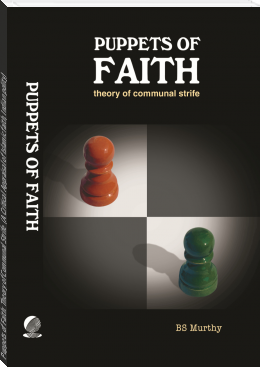
- Author: BS Murthy
Book online «Puppets of Faith: Theory of Communal Strife (A Critical Appraisal of Islamic faith, Indian polity) by BS Murthy (best pdf reader for ebooks .TXT) 📕». Author BS Murthy
Puppets of Faith: Theory of Communal Strife
A critical appraisal of Islamic faith, Indian polity ‘n more
BS Murthy
ISBN 81-901911-1-X
Enhanced edition © 2020 BS Murthy
Revised edition © 2013 BS Murthy
Copyright © 2003 BS Murthy
Cover design by E. Rohini Kumar, GDC creative advertising (p) ltd., Hyderabad
Self Imprint
F-9, Nandini Mansion,
1-10-234, Ashok Nagar,
Hyderabad – 500 020
Other books by BS Murthy -
Benign Flame – Saga of Love
Jewel-less Crown - Saga of Life
Crossing the Mirage – Passing through youth
Glaring Shadow – A stream of consciousness novel
Prey on the Prowl - A Crime Novel
Stories Varied – A Book of Short Stories
Onto the Stage – Slighted Souls and other stage and radio plays
Bhagvad-Gita: Treatise of self – help (A translation in verse)
Sundara Kānda - Hanuman’s Odyssey (A translation in verse)
Dedicated to -
All those men, women and children, who ever suffered at the hands of bigots
on account of the dogma of their faith, and to those sacrificial animals
that become victims of religious superstition.
Contents
Preface of Strife
Chapters
1. Advent of Dharma
2. God’s quid pro Quo
3. Pyramids of Wisdom
4. Ascent to Descent
5. The Zero People
6. Coming of the Christ
7. Legacy of Prophecy
8. War of Words
9. Czar of Medina
10. Angels of War
11. Privates of ‘the God’
12. Playing to the Gallery
13. Perils of History
14. Pitfalls of Faith
15. Blinkers of Belief
16. Shackles of Sharia
17. Anatomy of Islam
18. Fight for the Souls
19. India in Coma
20. Double Jeopardy
21. Paradise of Parasites
22. The Number Game
23. Winds of Change
24. Ant Grows Wings
25. Constitutional Amnesia
26. The Stymied State
27. The Wages of God
28. Delusions of Grandeur
29. Ways of the Bigots
30. The Rift Within
31. The Way Around
32. The Hindu Rebound
33. Italian Interregnum
34. Rama Rajya
35. Wait for the Savant
Preface of Strife
The lava of the volcano on which the world sits is the disaffection the Musalmans nurse towards the kafirs. While its chemistry world over is the Islamic religious rigidity, in India it is compounded by the Hindu ‘historical’ hurt, aggravated by the Muslim-appeasing political ethos of the State. It’s thus the Indian landscape is dotted with many of its earlier eruptions, but the one, in the wake of Godhra’s ‘burning train’ in 2002, affected everyone as never before. That a fanatical band of Musalmans should dare torch their Ram Sevaks in a railway coach of that Sabarmati Express seemed to the Sangh Parivar like Saladin crossing the Lakshman Rekha. And that the dalits too joined the hysterical Hindu mobs to burn their persons and property was beyond belief to the ghettoed Musalmans nevermind that many among the rioters were felled by police bullets.
In that setting, the prospect of a new-found Hindu unity spoiling their electoral party was something galling to the pseudo-secular politicians, who have been icing their caste-divisive Hindu electoral cake with the cream of the consolidated Muslim votes. The self-serving fourth estate that meanwhile expanded its ‘mass’ base, courtesy the idiot box, saw in all this a godsend ‘breaking news’, enabling the Islamapologic columnists (Islamapologia is about condescending to descend to the Musalmans) as well as Islam-naïve Hindu intellectuals to score a Brownie point or two into the Indian pseudo-secular goal. Not the ones to miss any opportunity for Hindu bashing, the ideologically afflicted left-liberals, as well as the half-read Hindu columnists, who ever shy as ever to stare at the Islamic fundamentalism straight in its face, had joined the anti-Hindutva bandwagon albeit by pushing the ghastly Godhra manifestation of Islamism under the secular carpet. Above all, the politicians of all ‘secular’ hues, alive as they are to every opportunity that presents itself to consolidate their Islamist constituencies, wouldn’t let this pass; so, they were in no hurry to leave the scene, but continued to stoke the communal fires to keep the electorate warm.
But yet to sustain the public interest for the sake of its profitability, even as the media needed to name a villain and focus its spotlight on him, Sonia the Italian, who had long usurped the grand old party of India, invented the one for it in Narendra Damodardas Modi, the Chief Minister of the riot-torn Gujarat and dubbed him maut ka saudāgar (merchant of death) unfairly though. It’s another matter however, that the media-maligned Modi, after many trials and tribulations, was anointed by Indians as their mukhiya (head), after a Hindu pushkara (12 years), to become the harbinger of the much need change, overdue by a long shot that is. History is naughty for it first creates chaos and then brings about order.
But the problem with a problem is that until one admits that it exists, one cannot address it, and unless it is addressed, it persists. Make no mistake here is this Musalmans disaffection for kafirs for the world to contend with, and the Hindu-Muslim discord is but its Indian variation. The pseudo-secular sophistry has it that when it comes to the basic tenets, all religions carry a premium on peace and all the believers seek social harmony but for a few misguided fanatical elements on either side of the communal divide.
However, sadly though, the ground reality is that to the average Hindu, it seems as if the Musalmans suffer from the symptoms of Islamic fever caused by a diseased mind-set afflicted by the sharia fervor. The Muslim compliment to the Hindu is the contemptuous kafir, destined for hell and all that goes with it. Indeed, it is but owing to the glossing over of these entrenched misgivings by the pseudo-secular politicians, who cater to the Islamic whims of obscurantist mullahs and moulvis as a means of appeasing the umma, that the communal lava erupts periodically to hurt the tenuous Hindu-Muslim coexistence in India, ironically partitioned, based on the Islamic premise that the umma cannot coexist with the Hindus.
This book seeks to outline the background of the Musalman-kafir animosity on one hand, and the Hindu–Muslim communal divide on the other. It would seem that these are the products of one or more of the scriptural notions, religious dogmas, medieval history, and modern politics, or all put together. As one cannot understand man unless he understands his religion, all must be abreast of the basic religious tenets of the competing or conflicting faiths, more so the sectarian Semitic dispensations. Then, it would be revealing how the religious scriptures per se contribute to social discord and communal disaffection, and /or both. In the strife-torn world of ours, it’s our grasp of this canvas of conflict that might eventually enable us to paint the picture of peaceful coexistence of the faithful of mutually contradicting belief systems.
Thus, the social evolution as well as the spiritual ethos of Hinduism and Buddhism on one hand and that of the Judaism, Christianity, and Islam on the other are sketched here in its rudiments. Also, since man carries the historical deadwood, in spite of himself, the history that connects and disconnects the Abrahamic faiths, and that which divides the Hindu-Muslim emotions is pictured for one to appreciate the background of their unceasing strife.
After all, there is more to religion than that meets the eye, which is the overriding faith and feeling of the believers in its divine inerrancy. Given that the Islamic creed is more so a product of Muhammad’s persona, the influence of his character in shaping the ethos of the umma has been analyzed. Won’t the Musalmans themselves concede that their endeavor would be to follow the straight path of Islam as earnestly as they could, as others, any way, have strayed onto the satanic path? Since it is this mind-set that makes the Musalmans apart in the religious sense, how this could possibly govern the Muslim psyche is scanned with “I’m Ok – You’re Ok” the famous work of Thomas A. Harris, with their religious creed from Roland E Miller’s “Muslim Friends–Their Faith and Feeling” as the probe.
All this might not only enable the ‘the others’ to appreciate the Muslim constraints but also understand their own aberrations. Likewise, it could be hoped that the Musalmans too would ponder over the apprehensions of the ‘the others’ as well as their own afflictions that are behind the Musalman-kafir confrontation.
Chapter 1
Advent of Dharma
As opposed to the purported revelation of the God’s ‘chosen path’ to man through some messiah, which forms the basis of the Semitic faiths, the essence of Hinduism has been for one to adhere to his dharma, supposedly sanctified by their gods in communion with the rishis of yore. And dharma, though varies from man to man, per se is the common course for the salvation of the souls. It is this salient feature of its religious character that gives Hinduism its theological variety and philosophical edge, sorely lacking in the Semitic faiths, each moulded in the persona of its prophet, moreso the Mohammedan cult of Islam.
Well, in the Semitic religions, the essence of the faith is the implicit obedience to the All-Knowing Almighty, and strict compliance with the dogma enunciated by the messiah, ostensibly received from the Creator Himself. Moreover, it is incumbent upon the faithful to believe that ‘the God’ revealed to their prophet the right ‘path of life’ for them to unquestioningly follow so as to stand them in good stead on the Day of Judgment. Besides, it is the unique feature of the Semitic religious dogma in that the messiah is believed to be endowed with the power of intercession on behalf of the faithful on the Fateful Day. If anything, this precept seems more pronounced in the Christianity and Islam than in the Judaism. This unmistakably led to the Semitic habit of the faithful looking up to the messiah to help them attain salvation, or reach the paradise as the case may be. Intended or otherwise, the messiah became the fulcrum of the faith as well as the icon of the Abrahamic religious ethos. In the process, as it were, the Lord God of the religion got relegated to the background, nevermind the pretence to the contrary.
In such a religious setting, it was only time before the vulgar minds insensibly allowed the prophet to rule their religious space in the practice of the faith, supposedly founded by him at the behest of ‘the God’. The Semitic idea of decrying idol-worship, ostensibly to let ‘the God’ not suffer any rivals, seems to have been diluted by the gentiles who embraced the Christianity in the medieval times. Of course, that was well after Moses’ Hebrew herds worshipped that golden cow in the ancient times. At length, in the practice of the faiths, this ‘no rival to the God’ dogma turned out into an ‘accent on the prophet’ culture. But in the end, the Christian model insensibly found the savior sharing the ecclesiastical dais with the exalted preachers of his faith enshrined as Saints. And seemingly Islam wanted to avoid that ever happening to its prophet, and designed a mechanism to forever preclude that possibility driven by human proclivity. But in the process, the Musalmans came to condition themselves to revere their prophet rendering Islam into Mohammedanism in practice.
However, in the precepts of sanātana dharma, aka Hinduism, even as one’s religious ethos is to seek God’s favour for his moksha, in the philosophical sense he perceives Him as his own spiritual self, aham brahmasmi brahma. Conceptually thus, such a relationship between man and his maker, without the intermediary of a messiah, enables the worshipper experience a sense of oneness with the One worshipped. Hence, it is no blasphemy for a Hindu to tirade his God, strange though it may seem, when felt let down by Him.
Thus, going by the precept and practice, Hinduism cannot be deemed a dogma in the Semitic religious sense. Naturally, our enquiry should be directed at exploring the causative factors that should’ve induced this unique Hindu spiritual oneness with God, as against the Semitic religious projection
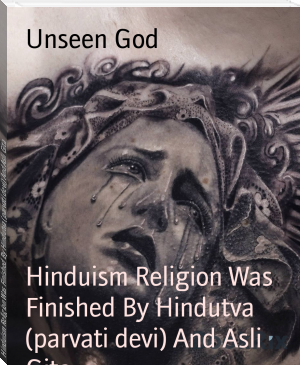
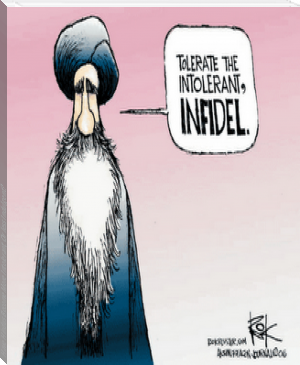
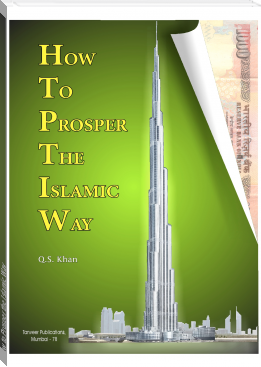
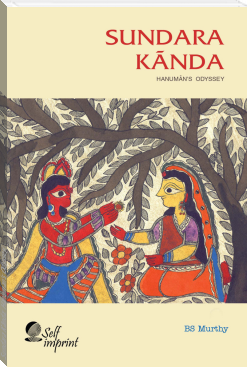
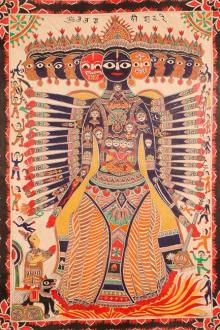
Comments (0)